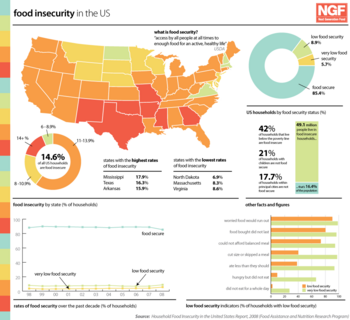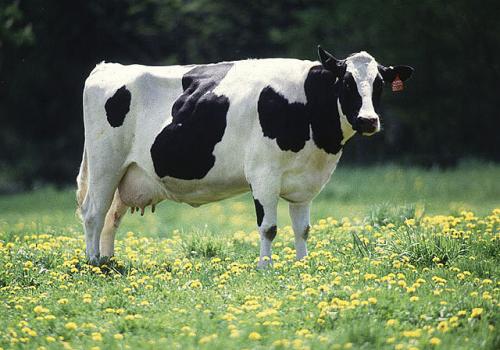The food insecurity rate in the United States was 12 in 2017. The city of Jackson population 164000 is often classified as a food desert for its high rate of food insecurity and the scarcity of well-stocked stores.
 Hunger In The United States Wikipedia
Hunger In The United States Wikipedia
Over 16 million children in California and nearly 17 million children in Texas were at risk of hunger in 2017.

Food insecurity rates in the us. According the United States Department of Agriculture USDA food insecurity is defined as a household-level economic and social condition of limited or uncertain access to adequate food. The most recent report from the USDA estimated that 104 of American adults were living in households with food insecurity in 2018. Food insecurity is defined as the disruption of food intake or eating patterns because of lack of money and other resources.
New Mexico and Arkansas were the states with the highest child food insecurity rates. For those without a high. Deidre Lyons lives there with her.
Explore a map of hunger statistics in the United States at the state and local level. 6 Despite the high prevalence of the problem limited evidence is available regarding the impact of food insecurity on mortality. 2 Food insecurity does not necessarily cause hunger but hunger iii.
241 and 236 respectively. Eight of the 10 counties with the highest food-insecurity rates are more than 60 Black according to Feeding America. 1 The adverse social physical and psychological outcomes associated with food insecurity.
Food Insecurity Rates by County. Rates and Impacts of Food Insecurity. Household Food Security in the United States in 2019.
The remaining 105 percent of households were food insecure at least some time during the year including 41 percent 53 million households that had very low food security. Relative to predicted rates for March in April food insecurity doubled overall and tripled among those with children. In addition for the first time we include projections by race for Black and white individuals by geography rural and urban and for very low food security.
Food insecurity was lower in 2019 than 2018 111 percent. State of food insecurity in the United States 2014 eTh food security questionnaire report indicated that in 2014 86 percent of households in the US were food secure throughout the year 84 percent were found to have low food security and 56 percent had very low food security. Households were food insecure at some time during the year.
Households were food secure throughout the year. 1 Recent data indicate that approximately 123 or 156 million households in the United States US were food insecure at least some time during the last year. Those eight are located in the deep South.
It is estimated that in 2018 about 11 of families in the US had food insecurity at some point. White Americans fell below the national average with 79 experiencing food insecurity. The Most Food-Insecure States According to our analysis the most food-insecure state following the impacts of COVID-19 is Mississippi scoring 33 out of a 50-point scale.
About 4 had low food security characterized by. One-third of households with children making less than 25000 a year more than one in five households with incomes between 25000 and 50000 and one in. This is more than twice the rates in Massachusetts and North Dakota.
In 2019 895 percent of US. This brief includes updated 2020 projections and new 2021 projections at the national level for the overall population and for children. We find sharp increases in food insecurity in April 2020 during the COVID-19 health emergency.
While the US is a wealthy and overall food secure nation many of its residents experience food insecurity. The food insecurity rate is highest in the South followed by the Midwest West and Northeast. 1 In 2014 174 million US.
One in eight households or 40 million people including 125 million children were food insecure at some time during 2017 with some groups facing much higher rates than the national average. The prevalence of food insecurity varied considerably by state ranging from 66 percent in New Hampshire to 157 percent in Mississippi for the three-year period of 20172019. College graduates experienced food insecurity at a rate of just 5 last year.
We provide estimates of food insecurity and food pantry use for states and metropolitan areas represented in the survey.
